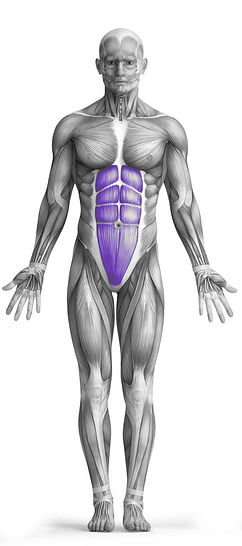Exercise Ball Weighted Sit up 101 Video Tutorial
0

Exercise Synopsis
Target Muscle Group
Abs
Secondary Targets
None
Execution
Isolation
Force Type
Pull
Required Equipment
Exercise Ball
Fitness Level
Intermediate
Variations
None
Alternatives
None
Timer
Hour
Minute
Second
Stopwatch
00:00:00:00
Overview
The Exercise Ball Weighted Sit-up is an effective core-strengthening exercise that primarily targets the abdominal muscles. By using an exercise ball, this variation increases the challenge compared to traditional sit-ups, engaging the core more intensely due to the instability the ball provides. Holding a weight, such as a dumbbell or plate, adds resistance, further activating the abs and enhancing muscle engagement. This exercise helps improve core strength and stability, making it an excellent addition to any workout routine aimed at toning the midsection. It requires only an exercise ball and a weight for resistance.
How to Perform
Begin by selecting a weight plate that suits your fitness level and sit comfortably on the exercise ball.
Position your feet securely under a stable surface or rest them against something to ensure balance and support.
Hold the weight with both hands, keeping it close to your head, and extend your arms straight overhead.
Engage your core as you slowly lower your torso back, allowing your shoulder blades to gently make contact with the exercise ball.
Pause briefly at the bottom, ensuring proper control, and then exhale as you lift your torso back up to the starting position.
Repeat this motion for the desired number of repetitions, maintaining steady movement and focusing on using your abs to drive the motion.
★ Bonus: For exercises that involve external weights (such as dumbbells, barbells, or machines), the One Rep Max (1RM) calculator can help you estimate your maximum lifting capacity. Use it to track your strength progress and adjust your training for optimal results.
Tips
Begin by using a weight that feels manageable for you, ensuring you can perform the exercise with proper form.
As you become more comfortable and your strength improves, gradually increase the weight to continue challenging your muscles.
How Not to Perform
Avoid Using Momentum
Do not swing your body or use sudden jerks to lift yourself. Rely on controlled, deliberate movements to engage your core muscles effectively.
Don’t Arch Your Lower Back
Maintain a neutral spine throughout the movement. Avoid overextending your lower back when coming up from the sit-up, as this can lead to unnecessary strain and injury.
Don’t Overload the Weight Too Soon
Start with a manageable weight and focus on form. Using too much weight before you're ready can compromise your technique and put excessive strain on your body.
Don’t Rush the Movement
Perform the exercise slowly, especially when lowering your torso. Rushing through the movement reduces the effectiveness and increases the risk of injury.
Avoid Locking Your Knees
Keep your knees slightly bent and avoid locking them, as this can lead to unnecessary tension in your legs and decrease your stability on the exercise ball.
Don’t Allow Your Feet to Lose Stability
Ensure your feet remain secure and in position throughout the exercise. Losing stability can make the exercise less effective and increase the risk of falling or injury.
Don’t Hold Your Breath
Focus on your breathing—exhale as you come up and inhale as you lower yourself. Holding your breath can increase pressure in your core and potentially cause discomfort or dizziness.
Avoid Overextending the Range of Motion
Do not lower your torso too far back. Lower only until your shoulder blades touch the ball, as going further can put undue stress on your lower back.
Variations
Variations of fitness exercises refer to different ways of performing a specific exercise or movement to target various muscle groups, intensities, or goals. These variations aim to challenge the body differently, prevent plateaus, and cater to individuals with varying fitness levels.
Alternatives
Alternative exercises in fitness refer to different movements or activities that target similar muscle groups or serve the same training purpose as the primary exercise. These alternative exercises can be used as substitutes when the original exercise is unavailable or challenging to perform due to various reasons such as equipment limitations, injuries, or personal preferences.








